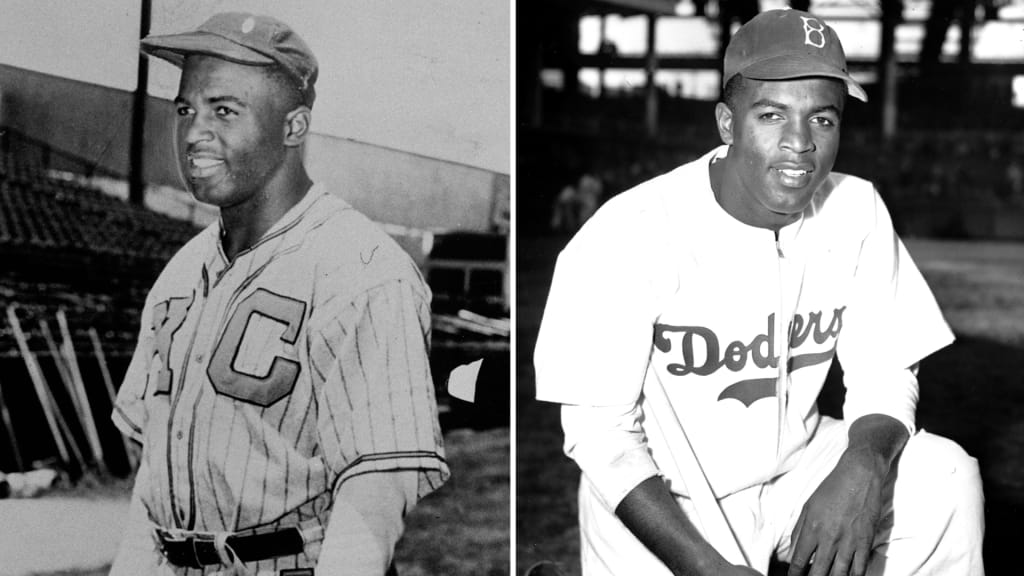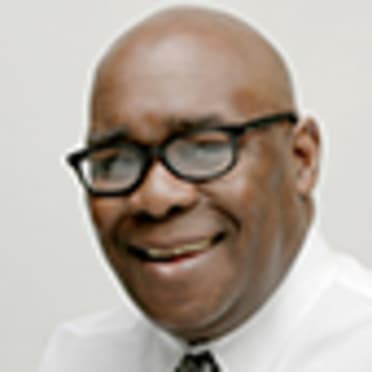
A version of this story was first published on April 15, 2020.
NEW YORK -- If not for World War II, Jackie Robinson may never have played in the Negro Leagues in 1945, let alone the Major Leagues two years later. The Kansas City Monarchs’ roster, like many others in the Negro Leagues and Major League Baseball, was gutted by players volunteering or being drafted into military service.
First baseman Buck O’Neil, for example, was in the Navy, while infielder Hank Thompson and slugger Willard Brown were serving in the Army. Right-hander Hilton Smith, another player in the military, realized his team needed players to be competitive.
Smith knew of a four-sport star at UCLA named Jackie Robinson, who had earned letters in baseball, basketball, football and track. Smith told team owner J.L. Wilkinson he should consider signing this gifted athlete, but there was one problem: Robinson was a player-coach for the Sam Huston College basketball team in Austin, Texas.
That, however, didn’t stop the Monarchs -- who held their Spring Training in nearby Houston -- from giving Robinson a tryout.
Harold “Pea Vine” Adanandus, the trainer for Robinson’s basketball team, recalled in a 1997 interview with the Austin American-Statesman how he reacted when Robinson told the players he was leaving to join the Monarchs.
"I said, 'Well, Jackie, I didn't even know you played any baseball,’” said Adanandus, who died in 2007. “And he said, 'Yeah, I play a little.’”
After Robinson gave a good impression on the field, Wilkinson offered Robinson a $500 bonus and $250 per month. Robinson was worth every penny. In his only year with the Monarchs, Robinson flourished, hitting .414 with one home run in 58 at-bats.
“To his teammates, [Robinson] was another guy trying to make the team,” said Bob Kendrick, the president of the Negro Leagues Baseball Museum. “They didn’t think he was anything special … but they knew he was different than they were, and he was. He was an L.A. guy. Little did Wilkinson know that he signed the man would put him out of business [a few years later].”
Robinson, then 26, flourished with the bat and glove and acted as if he was a 10-year veteran with the Monarchs. While he enjoyed playing with his teammates, Robinson hated dealing with Jim Crow laws that prevented African Americans from using bathrooms and eating in restaurants. The “Whites Only” signs did not sit well with Robinson -- all he wanted was equal treatment.
One day, the Monarchs' bus drove into a gas station in Oklahoma to get six gallons of gas, according to Kendrick. It was the same gas station they had been going to for years. They would get those gallons of gas, but they never went in the restroom, which had a “Whites Only” sign.
Robinson started walking toward the restroom, and the gas attendant said, “Boy, where are you going?”
“I’m going to the restroom," Robinson replied.
The attendant told Robinson that he better not. Robinson stopped, turned and told him to take the hose out of the tank. Not wanting to lose out on the sale, he relented and allowed Robinson to go in the restroom.
“Jackie was so different from his teammates,” Kendrick said. “He was trying to send a message to his teammates: ‘We don’t have to take things that we don’t necessarily have to take.’”
Robinson, of course, became the first African American to break the color barrier and play in the Major Leagues, where his skill made him one of the best to play the game. He had dazzling speed, stellar defense and a bat that helped the Brooklyn Dodgers win six pennants and one World Series title during his 10 years in MLB. His impact was felt right away, as evidenced by his 1947 National League Rookie of the Year Award and his NL Most Valuable Player Award just two years later.
But Robinson’s success in the Major Leagues also proved to be the beginning of the end of the Negro Leagues. His success prompted other big league teams to follow suit and sign other African American players away from the Negro Leagues. After Robinson, players like Larry Doby, Monte Irvin and Don Newcombe followed and flourished in the big leagues.
Slowly but surely, more African Americans left the Negro Leagues for the greener pastures of the big leagues, robbing the Negro Leagues of their best talent. Wilkinson saw the end coming sooner than most and sold his interest in the Monarchs in 1948. The Negro National League folded after the '48 season, while the Negro American League played on through the '50s.
The Red Sox became the last Major League team to integrate with the addition of Elijah “Pumpsie” Green in 1959. The following year, the Negro American League folded, bringing a close to the Negro Leagues, although the Indianapolis Clowns barnstormed for years afterward.
“Robinson’s success in the big leagues was a tremendous sign of progress, but as I tell our guests when they visit the Negro League Museum, there is always a cost for progress,” Kendrick said. “Black businesses paid a dear cost. … There was an entire workforce that ended up losing their jobs. Black businesses played a dear cost because of the demise of the Negro Leagues.”
The last player from the Negro Leagues to be a Major League regular was none other than Henry Aaron, who was signed away from the Clowns in 1952 by the Milwaukee Braves and reached the big leagues in '54. Minnie Minoso, who had played for the New York Cubans, was the last Negro Leagues player to appear in a Major League game. At age 54, he was activated by the White Sox in 1980 and pinch-hit in two games vs. the Angels.
